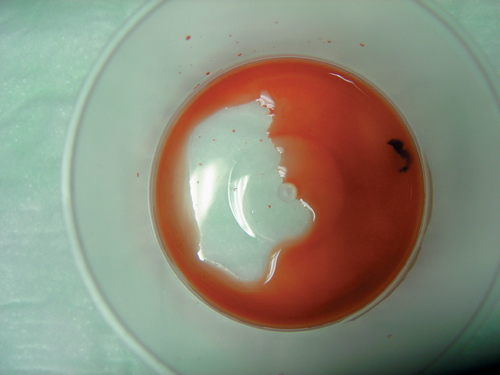Difference between revisions of "Rabbit Medicine and Surgery Q&A 20"
Ggaitskell (talk | contribs) (Created page with "{{Template:Manson Keeble Meredith}} centre|500px <br /> '''An owner is worried that her rabbit’s urine contains blood. She has brought in a ...") |
|||
| Line 19: | Line 19: | ||
|a2= | |a2= | ||
Differential diagnoses include: | Differential diagnoses include: | ||
| − | *reproductive tract disease (uterine adenocarcinoma, | + | *reproductive tract disease (uterine adenocarcinoma, uterine polyps, abortion and endometrial venous aneurysm); |
| − | |||
*urinary tract disease (cystitis, bladder polyps, pyelonephritis, renal infarcts, urolithiasis); and | *urinary tract disease (cystitis, bladder polyps, pyelonephritis, renal infarcts, urolithiasis); and | ||
*lead toxicity. | *lead toxicity. | ||
Revision as of 10:20, 11 August 2011
| This question was provided by Manson Publishing as part of the OVAL Project. See more Rabbit Medicine and Surgery questions |
An owner is worried that her rabbit’s urine contains blood. She has brought in a urine sample for analysis.
| Question | Answer | Article | |
| How would you diagnose haematuria in the rabbit? | Rabbit urine can contain porphyrin pigments. This colours the urine dark brown to red and is often confused by owners with blood. |
[[|Link to Article]] | |
| What are the differential diagnoses for this condition? | Differential diagnoses include:
|
[[|Link to Article]] | |
| What further tests would you perform to reach a diagnosis? | A thorough history should be sought and a full clinical examination undertaken prior to obtaining a sterile urine sample, either by catheterization under sedation or by cystocentesis, for analysis and culture. |
[[|Link to Article]] | |
